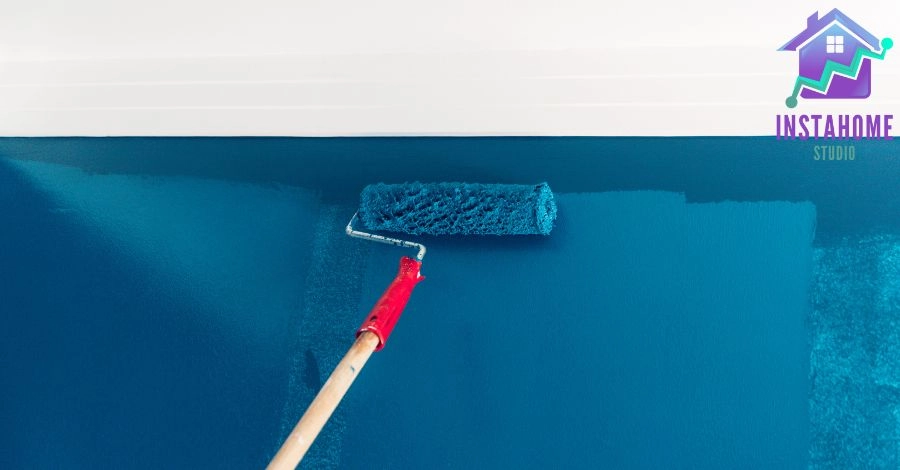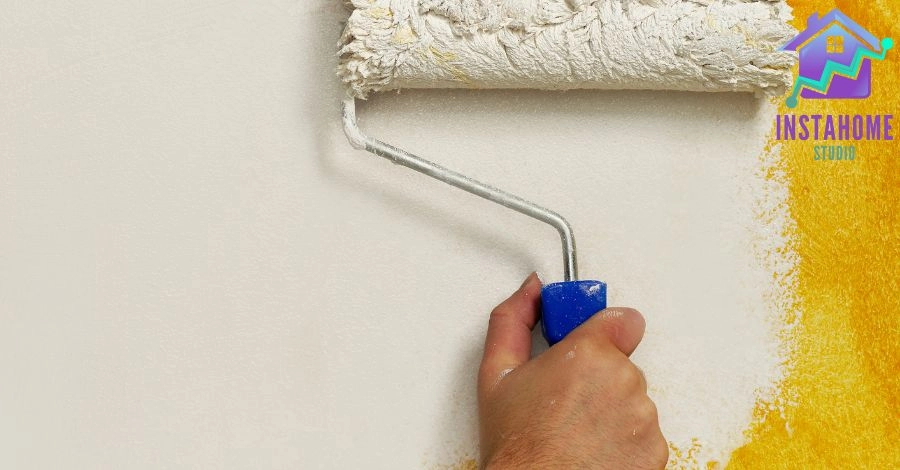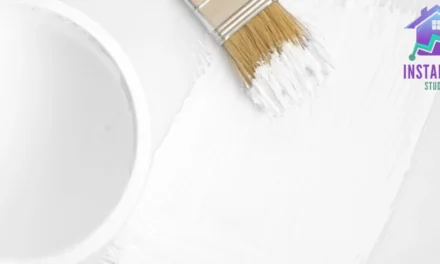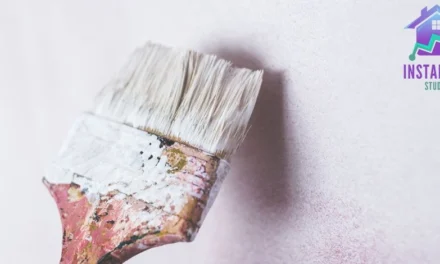What are ceramic paints? Ceramic paints are definitely not among those products that have been available on the market for a long time and this is why they are so popular. How did it happen? There are actually a whole lot of reasons. However, the most important are definitely their unique properties. We will talk about them in more detail in the next part of our article. . However, we can already say that it is related, among others, to their very high resistance to washing and scrubbing.
Okay, what exactly are these ceramic paints anyway? To put it simply, the simplest method is nothing more than water-soluble latex paints enriched with several ceramic components. It is thanks to these components that ceramic paints have such high resistance. One of the most characteristic features of ceramic paints is its structure. It is very smooth and not rough.
The most important properties of ceramic paints
They have a whole lot of different properties that are able to convince an increasing number of customers in a very effective way. From the effect they give to the wall to various types of resistance, which are not limited to resistance to water and scrubbing. It is also worth mentioning that when it comes to their application to various surfaces, it is not the most difficult, quite the opposite. It’s very simple. Other important properties include the following.
Smooth and hard – these are the properties that the wall gains after painting it with ceramic paint. On the other hand, minor irregularities on the surface are perfectly covered and leveled (this applies to, among others, scratches or scratches). As a result, there is no impression of an uneven structure on the painted surface.
Mechanical resistance – after covering the surface with mechanical paints, the wall becomes much more resistant to e.g. impacts, scratches, scrapes or abrasions. In addition, they can maintain their impeccable and aesthetic appearance for a very long time. Thanks to this, they will work very well, for example in a children’s room, where walls scratched by a toddler are not a problem.
It can be washed freely – resistance to water and other chemicals and other detergents of this type is a complete standard here. It can also be freely scrubbed (of course not with a wire). It should not affect the aesthetics or even the texture of the wall in any way.
It does not attract dust – among its features it has something called antistatic properties. What is she responsible for? This is indicated by the name of the feature itself. Does not attract dust. Therefore, it is a great choice for allergy sufferers and children’s rooms. Then we do not risk that tenants will be exposed to more contact with dust, etc.
How to paint with ceramic paint? What is the drying time?

Painting with ceramic paints is not a difficult task, you can even say that it is very. The painting process can be performed in many different ways. We can paint with them using rollers, brushes and even spray. There are no restrictions here. And why is painting easy? We owe everything to the special consistency of the paint, thanks to which its distribution on the surface of the wall is extremely pleasant and quick.
Before we start any work, we must prepare the work surface well. It must be free of any dirt in the form of a large amount of dust, dust, remains of old paints, plasters, etc. There must be no greasy stains, e.g. oil stains, on the walls. However, we pay special attention to ensure that the surface is completely dry and even.
ATTENTION! If the paint manufacturer dedicates a primer, it should be applied and left to dry overnight. Then we are sure that it will dry properly and apply with the wall. However, this is rarely required because, as we mentioned earlier, ceramic paints are modified latex paints, so a primer is usually not required.
And how to apply it to the wall? The method here is almost completely arbitrary. Roller, brush, spray is irrelevant, it is important that we apply a thin layer of our paint. Then wait 2 hours and apply a second layer, equally thin, which is then left to dry.
What are the colors of ceramic paints?
An unspoken rule tells us that the availability of colors is almost entirely dependent on the manufacturer. It is he who decides with what pigments he will color his paints. There are some exceptions to this rule, but not now. Ceramic paints have an incredibly wide range of colors, so everyone will be able to find something especially for themselves. Regardless of whether you are in favor of subdued earth colors or rather bright colors such as mighty yellow or pink.
However, nobody will be surprised if we say that the most popular color of ceramic paints is white. Why? Because it is very easy to clean it of dirt and keep it in its original color. In addition, it fits in fact with any interior and decor, regardless of the style we choose. In addition to white, all shades of beige, powder pink and other more intense colors are also very popular. E.g. strong browns, reds, shades of black, etc.
Where are ceramic paints best suited?
Basically, it’s where you want it. In the first headline, we introduced you to some of the most popular properties of ceramic paints. Based on this, they will be able to determine whether ceramic paints are suitable for each room. They are perfect for children’s rooms, corridors, bathrooms or even kitchens. These are very universal paints, for which we can find application everywhere without any major problems. This, of course, only applies to interior painting of buildings.
Children’s room – is an ideal place in particular for these paints. Children’s drawings on the walls, stains or other dirt are no longer a problem. It is enough to simply wash the wall thoroughly and the problem is practically over. In addition, antistatic paints do not attract dust, which can be very burdensome for a child.
Kitchen and bathroom – these are really troublesome rooms, especially for paints due to the fairly high level of moisture that persists in them. However, this is not a problem here. Ceramic paints are completely waterproof and there are no objections to using them there. They are a very good alternative if someone is irritated by, for example, tiles over the countertops.
Corridor – a place particularly exposed to dirt, especially those brought from the outside. Here, the use of ceramic paints is even recommended. It is then very easy to keep the hall clean and free of dirt on the walls. In addition, water resistance is also a very advantageous feature here, which to a large extent provides additional protection for the aesthetics of the room.
Living room, bedroom etc. – it’s a total matter of taste. There are rather no contraindications regarding the use of ceramic paints. If we want the walls of our bedroom to be covered with this paint, go ahead. The huge range of available colors is undoubtedly able to help us make the right choice. As we said before, there is something for everyone here.
How can ceramic paints be cleaned?
It’s nothing too complicated. You will not find any specific recommendations or specialist indications regarding the care of ceramic paints here. Anyway, above, we have already mentioned their resistance to damage or stains so many times that there is no point in dwelling on it again. We will limit ourselves to a very quick, simple and pleasant instruction.
If you have noticed any dirt on the wall, e.g. after food, drinks, other paints, oils or felt-tip pens, crayons, etc., just grab a regular damp cloth and sponge and with its help and some non-corrosive detergent, such as dishwashing liquid, wash the dirt off. That’s it. We don’t have to do anything else.
The biggest advantages and disadvantages of ceramic paints
We mention the advantages practically from the beginning of our article in each of the above points. Therefore, now in a quick summary; resistance to mechanical damage, water resistance, very smooth and hard surface, easy to apply, detergents can be used on it, etc. It literally sounds like a perfect paint, doesn’t it? Unfortunately, there are no perfect things and it also has some disadvantages.
Fortunately, there is only one disadvantage here, but one that can effectively scare away a large part of potential customers. Of course, we are talking about the price. No one should be surprised that such versatile, resistant and aesthetic paints are more expensive than their counterparts. Unfortunately, we have no influence on this, but it is not a surprise to anyone that you have to pay for quality, and here we get a really high-class product.
Which ceramic paint is the best?
We can talk about a good ceramic paint when it is characterized by all the features mentioned in the previous points. These include, among others, high resistance to mechanical damage, water resistance, very smooth and hard surface, ease of application, detergents can be used on it.
However, the easiest way to choose a good quality ceramic paint is to simply look at whether it comes from a proven brand. We are not able to convince ourselves of the above properties until we open it and then it may be too late. Of these leading brands, we would personally recommend the magnate to you the most. It is a popular and proven brand by us and many others.
What is better? Latex or ceramic?
At the very beginning, we said that ceramic paints are nothing more than a variation of latex paints, only additionally improved. They are water-based and enriched and some other ingredients. And that’s where their advantage lies. Latex paints are also a very good choice. They have basically the same properties as ceramic paints. However, they differ from them in two things.
Latex paints are also a very good choice. They have basically the same properties as ceramic paints. However, they differ from them in two things.
The first is a little less resistance. Latex paints are less resistant to damage than ceramic ones, but this does not mean that they are weak. On the contrary. Only due to the specific composition of ceramic paints, they are a little less durable.
The second is, of course, the price. Latex paints may be less durable than ceramic ones, but they are cheaper. And they are still a very good choice.
How much does ceramic paint cost?
ATTENTION! Remember that the pricing here is typically indicative. It is best to check the specific prices of paints directly in stores. The specific price of the paint depends on such aspects as the manufacturer, quantity or sometimes color. However, the general pricing is as follows.
We can pay from $ 35 to even $ 80 for a 2.5-liter package of ceramic paint. On the other hand, the prices of 10 l packaging oscillate around $ 250.





